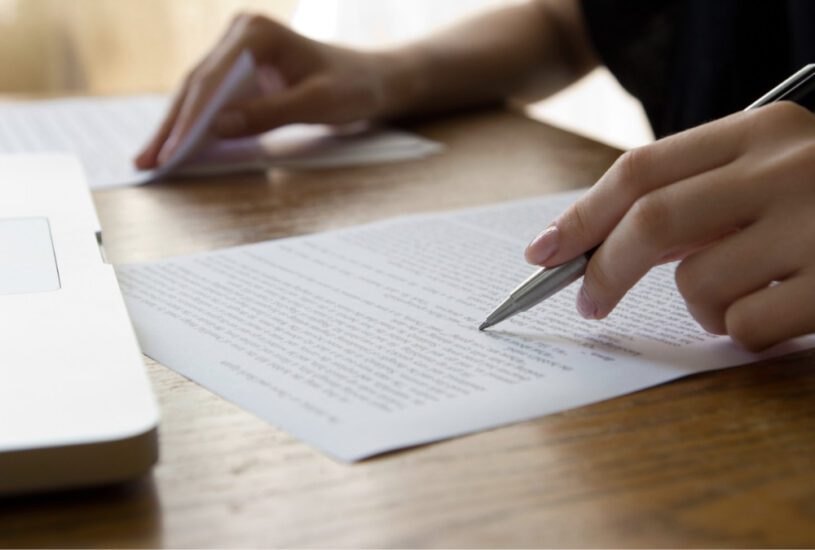Before submitting any writing assignment for grading, it’s imperative to do a final check of your work. Here are Tutor Doctor’s proofreading tips to help your child revise an essay!
1. Print out a physical copy to edit. This tip is definitely old-school, but there’s a good reason for it! When you work with a hard paper copy, it’s often easier to detect errors and mistakes you might glance over when reading from a screen. Although the reason for this phenomenon isn’t exactly known, perhaps it has something to do with being able to physically annotate your work through highlighting and writing notes in the margins. We know that many of these functions are available digitally, but there’s something special about marking up a hard copy when making revisions. Furthermore, when you finally do implement these corrections on the digital version, you are essentially giving your essay an additional pass during the update process. Although it’s a bit old fashioned, many students are surprised when they realize how much easier it is to make corrections when working with a paper copy.
2. Have another person read your work. Ask a parent, sibling, classmate, or even your teacher (if they are offering) to proofread your draft. There’s at least two good reasons to do this – most importantly, it’s always helpful to have another set of eyes on your essay. We all have unique perspectives and experiences that affect how we view the world, and having a third party read your work can provide valuable insight into the clarity of your writing. Having an outside perspective on your writing can help to verify your message is coming through to the reader as you intended. A second reason to have another person read your work is because they will often spot grammatical or spelling errors that you may have missed. There’s some psychology behind this phenomenon, but essentially our brain has a tendency to “fill in the blanks” when reading our own writing. We already know what we meant to say and have an internal dialogue going, so it’s surprisingly easy to glance over common errors when reading your own work!
3. Refer to the rubric, prompt, or grading overview. Students often view proofreading solely as a correction of linguistic errors – fixing grammar and spelling mistakes. However, it’s important to think about how essays are really being graded. In most cases, your teacher will place more weight on the content of your essay (and whether you followed the prompt/instructions) rather than minor typos. Neglecting to follow specific rubric or grading requirements is an easy way to lose points, so make an extra effort to double check that you have addressed all aspects of the prompt. For older students, the rubric will likely contain formatting requirements as well – font, text size, spacing, page numbers, citation format, etc. When it comes down to it, you can do a pretty decent job of covering your bases simply by making sure your essay adheres to what your teacher is asking (content-wise) and is submitted on-time in the proper format. These categories are going to make up the majority of your grade, so we recommend prioritizing your essay’s substance and presentation over minor spelling or grammar errors.




